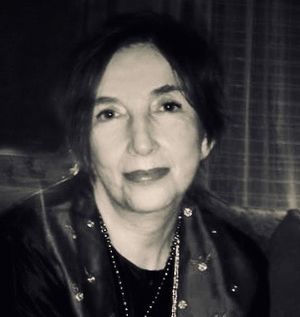Norma Bessouet facts for kids
Quick facts for kids
Norma Bessouet
|
|
|---|---|
 |
|
| Born | October 15, 1940 |
| Died | June 11, 2018 (aged 77) |
| Nationality | American |
| Education | Academia de Bellas Artes Prilidiano Pueyrredon (1968) |
| Known for | Painting Sculpture |
| Movement | Surrealism |
Norma Bessouet (born October 15, 1940 – died June 11, 2018) was an artist from Argentina. She was known for her paintings and sculptures. Norma often painted portraits, scenes from home life, and pictures of women. Her paintings had an abstract style, meaning they didn't always look exactly like real life. She also made unique wooden dolls that were abstract too.
Early Life and Art School
Norma Bessouet was born in Buenos Aires, Argentina. Her mother, Luisa Enero, was an illustrator and painter. She inspired Norma's love for art. Norma's father, Ivan Bessouet, was a cabinetmaker. Both her parents supported her interest in art.
In 1964, Norma was accepted into the Academia de Bellas Artes Prilidiano Pueyrredon, a famous art school. She graduated in 1968. Norma studied with a teacher named Ideal Sánchez. She was also very inspired by the work of another artist, Aída Carballo, who also worked at the art school. Norma often said Carballo was her biggest influence. In 1974, Norma moved from Argentina to Europe.
Art in Argentina
Art expert Marta Garsd says that Aída Carballo was the main influence on Norma's paintings. This included introducing her to the style of the Sienese School, which is an old way of painting from Italy. Norma also found ideas from the writer Marcel Schwob. She was especially interested in the feelings in his stories.
Marta Garsd described Norma's art as being a mix of abstraction (art that doesn't show things exactly as they look) and figurative art (art that shows real objects or people). Her style was also similar to modernism, like the artist Lino Eneas Spilimbergo. In 1971, Norma won a big award for a new drawing from the Argentine Academy of Arts.
Even though she won some awards in Argentina, it was hard for Norma to sell her art or get it shown in galleries in Buenos Aires. Many major galleries did not want to show her work because she was a woman artist. Norma chose to try and change this problem on her own, rather than joining groups of women artists.
Moving to Europe
In 1974, Norma Bessouet moved to London, England. She received a special award called a fellowship from the Slade School of Fine Arts in London. She also spent time working in Italy and, in 1976, in Barcelona, Spain.
In Spain, she tried to get attention for her woodworking. Her mother sent her the tools her father used for making cabinets. With these tools, Norma made dolls. These dolls had faces that reminded people of famous dolls made in Paris in the 1800s by Pierre Francois Jumeau. The dolls had glass eyes, clothes made of lace, and other old-fashioned details. In 1981, she became a fellow at the Ministry of Culture in Spain. This fellowship led her to travel to New York City, where she would later move permanently.
Life in New York
From 1981 onwards, Norma Bessouet lived in New York City as a full-time artist. She continued to create her unique dolls. The dolls she made in New York were very different from the ones she made in Spain. These dolls were described as "androgynous" (meaning they didn't look clearly male or female), "angelical," and had wings. They were also made of clear materials. Marta Garsd called these dolls "emblems of feminism" and "sexless creatures."
Norma worked in both New York and Buenos Aires. She preferred to work with people she knew personally instead of professional models for her art.
See also
 In Spanish: Norma Bessouet para niños
In Spanish: Norma Bessouet para niños

